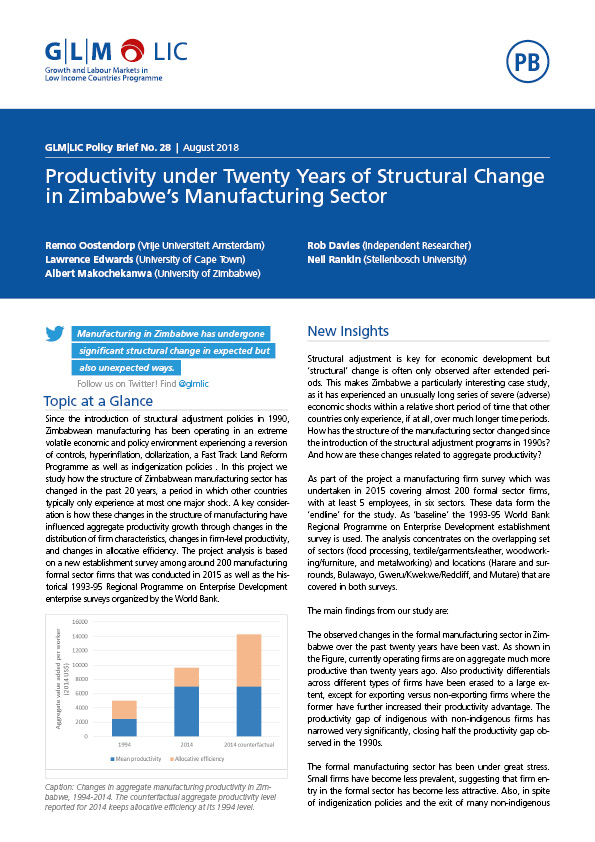Since the introduction of structural adjustment policies in 1990, Zimbabwean manufacturing has been operating in an extreme volatile economic and policy environment experiencing a reversion of controls, hyperinflation, dollarization, a Fast Track Land Reform Programme as well as indigenization policies . In this project we study how the structure of Zimbabwean manufacturing sector has changed in the past 20 years, a period in which other countries typically only experience at most one major shock. A key consideration is how these changes in the structure of manufacturing have influenced aggregate productivity growth through changes in the distribution of firm characteristics, changes in firm-level productivity, and changes in allocative efficiency. The project analysis is based on a new establishment survey among around 200 manufacturing formal sector firms that was conducted in 2015 as well as the historical 1993-95 Regional Programme on Enterprise Development enterprise surveys organized by the World Bank.
